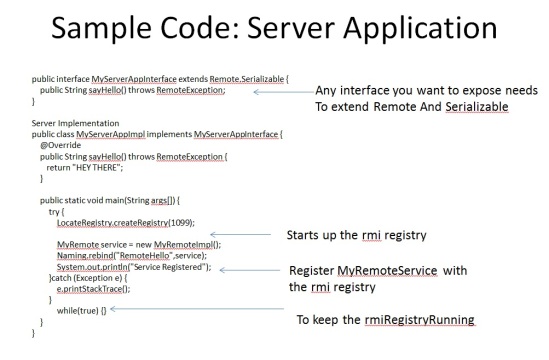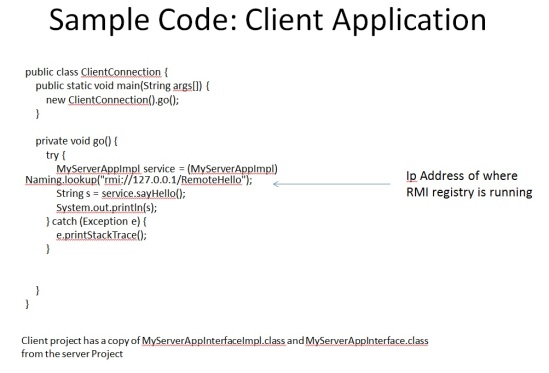Overview
This arctile is a slightly off topic from the normal themes but worth writing about as it’s a tricky subject. The content below is from some slides i produced:
Agenda
•Introduction
•Why Use RMI
•Overview Of RMI
•Sample App
•Gotchas
•More reading
Introduction
•Remote Method Invocation allows method calls to be made from one Java Virtual Machine (JVM) to another JVM
•Operates A Client/Server Model where The Server ‘registers’ classes it wishes to be available for clients to access
Why Use RMI
•Removes the complexity of using Sockets to communicate
•Allows a level of control over which objects you can access
•Makes it easier to simulate real life client/server scenarios
•Lends itself well to TDD
Overview Of RMI
•RMI Registry – holds a list of stub references which have be registered by server application
•Server application – defines interfaces and concrete implementations to be registered on RMI Registry
•Client application – connects to the RMI registry in order to make use of servers classes
Overview Of RMI
Sample Code: Server Application
Sample Client Application:
Gothcas:
•How do you make the compile classes available without copying them – use a webserver and have the client code download the classes dynamically
•Connection refused when running clientApp: Check serverApp is running first
•Class not found in client project: make sure you have copied the latest copy of your serverAppImpl.class to the client project
•Class not found exception when running client: ensure on the server application you have imported all of the classes your serverApp requires
More Reading


